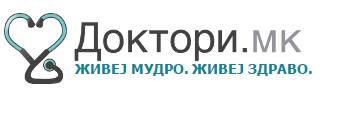JSER Policies
JSER Online
JSER Data
Frequency: quarterly
ISSN: 1409-6099 (Print)
ISSN: 1857-663X (Online)
Authors Info
- Read: 33319
Elizabeta ZISOVSKA
PERINATAL ASPHYXIA AS POTENTIAL SOURCE OF CHILDREN WITH DEVELOPMENTAL PSYCHO-MOTOR DIFFICULTIES
Besides the great improvement of aostetrics and neanatal intensive care, certain percentage of new born children suffer from perinatal asphyxia (PA) and that is one of the first reasons for hypoxic and ischemic brain damage which leads to neuro-developing handicap. In order to show how strong is the correaltion between PA and permanent sequele, an early, precise and prompt diagnosis of asphyxia and its influence on neonatal brain is neccessary.
This study presents answers to the following issues.
1. Which parameters define precisely the perinatal asphyxia?
2. How great is the PA incidence on our material?
3. What is the percentage of postasphyxic encephalopathy (PAE) in the group of asphyxic new born children?
4. Which of these children bear high risk for developmental psycho-motor difficulties?
Material
The new born children delivered on time in the Clinic of Gyneacology and Obstetrics.
Methods
1. Early diagnosis of PA according to the score consisted of high specific, sensitivity and positive and predictive value
2. Consequent neurological check-ups and PAE cathegori-zation for seven days
3. Ultrasound examination of CNS through big fontanelle
4. Lab analyses
Results
5.639 successive new born children delivered on time were examined. The included scouring system covers APGAR score at the 5th minute, cardiotocographic record, base deficit in ABS, meconium around the amniotic water. According to this system, 81 child passed the PA , i.e., 14,3/ 1.000 new born children delivered on time. Out of them, 54 have signs of PAE (9,5/1000 new born children delivered on time), i.e., 66,6% of all asphyxia new born children. Classification has been made according to the PAE grade: 34 children survived the first grade (62,9%), 11 children survived the second grade (20,4%) and 9 new born children survived the third grade (16,7%). According to data in literature and long year studies of this issue, the children from the group who passed the second and the third grade of PAE have the risk of neurodeveloping changes and disorders, i.e., that risk is 3,5/1000 children born on time and they should be recorded and permanently observed.
Share Us
Journal metrics
-
 SNIP 0.059
SNIP 0.059 -
 IPP 0.07
IPP 0.07 -
 SJR 0.13
SJR 0.13 -
 h5-index 7
h5-index 7 -
 Google-based impact factor: 0.68
Google-based impact factor: 0.68
10 Most Read Articles
- PARENTAL ACCEPTANCE / REJECTION AND EMOTIONAL INTELLIGENCE AMONG ADOLESCENTS WITH AND WITHOUT DELINQUENT BEHAVIOR
- RELATIONSHIP BETWEEN LIFE BUILDING SKILLS AND SOCIAL ADJUSTMENT OF STUDENTS WITH HEARING IMPAIRMENT: IMPLICATIONS FOR COUNSELING
- EXPERIENCES FROM THE EDUCATIONAL SYSTEM – NARRATIVES OF PARENTS WITH CHILDREN WITH DISABILITIES IN CROATIA
- INOVATIONS IN THERAPY OF AUTISM
- AUTISM AND TUBEROUS SCLEROSIS
- THE DURATION AND PHASES OF QUALITATIVE RESEARCH
- REHABILITATION OF PERSONS WITH CEREBRAL PALSY
- DISORDERED ATTENTION AS NEUROPSYCHOLOGICAL COGNITIVE DISFUNCTION
- HYPERACTIVE CHILD`S DISTURBED ATTENTION AS THE MOST COMMON CAUSE FOR LIGHT FORMS OF MENTAL DEFICIENCY
- DIAGNOSTIC AND TREATMENT OPTIONS IN AUTISTIC SPECTRUM DISORDERS – AN OVERVIEW
















